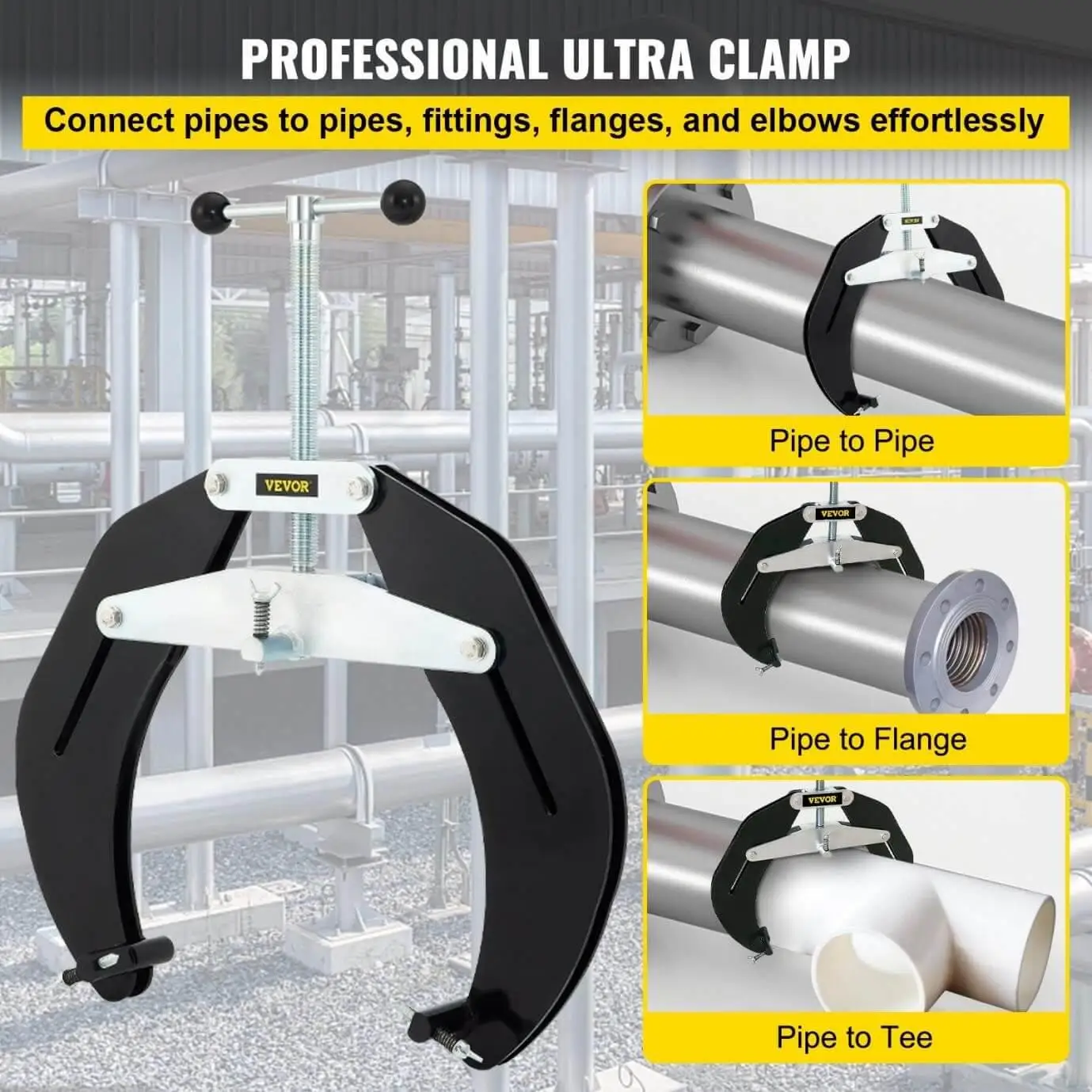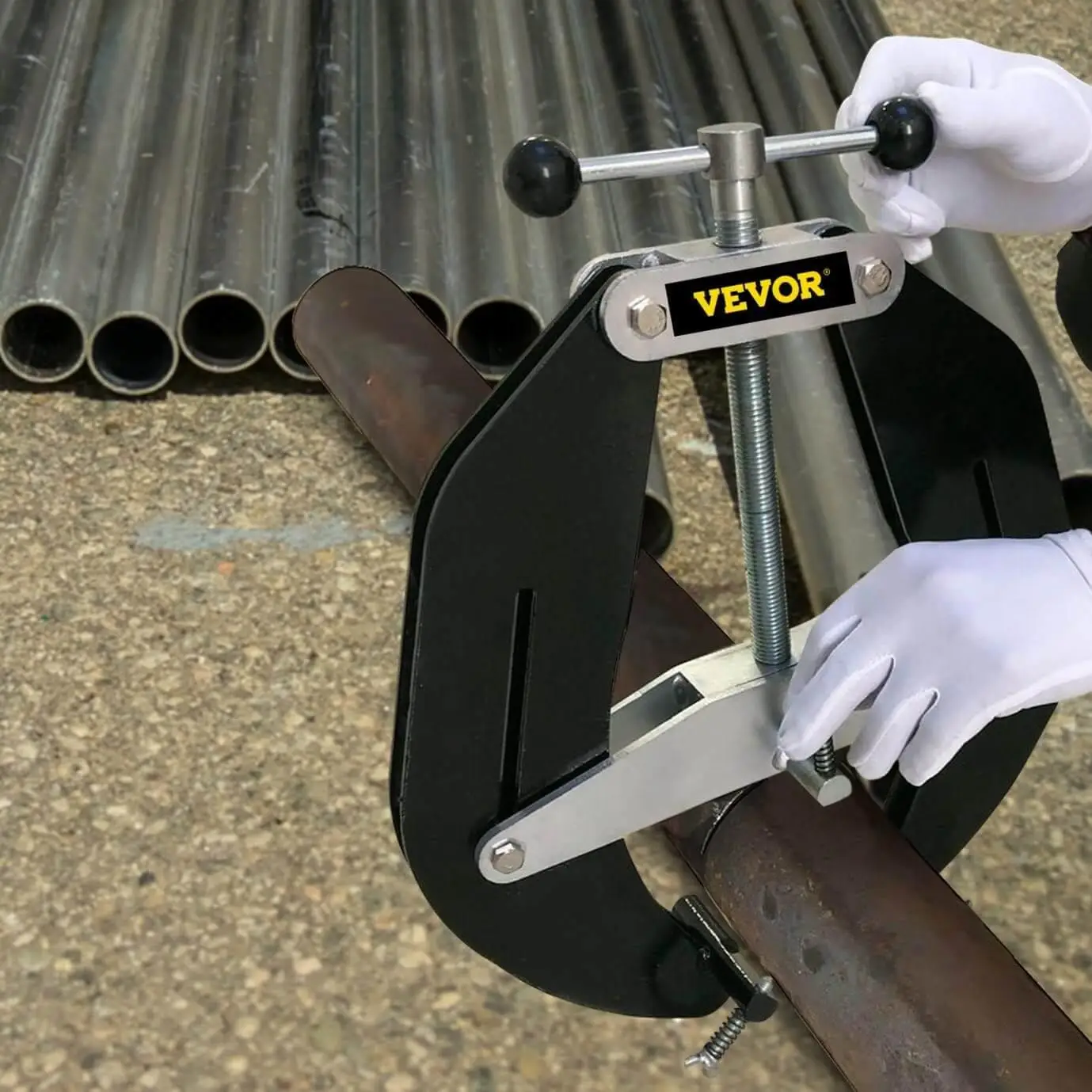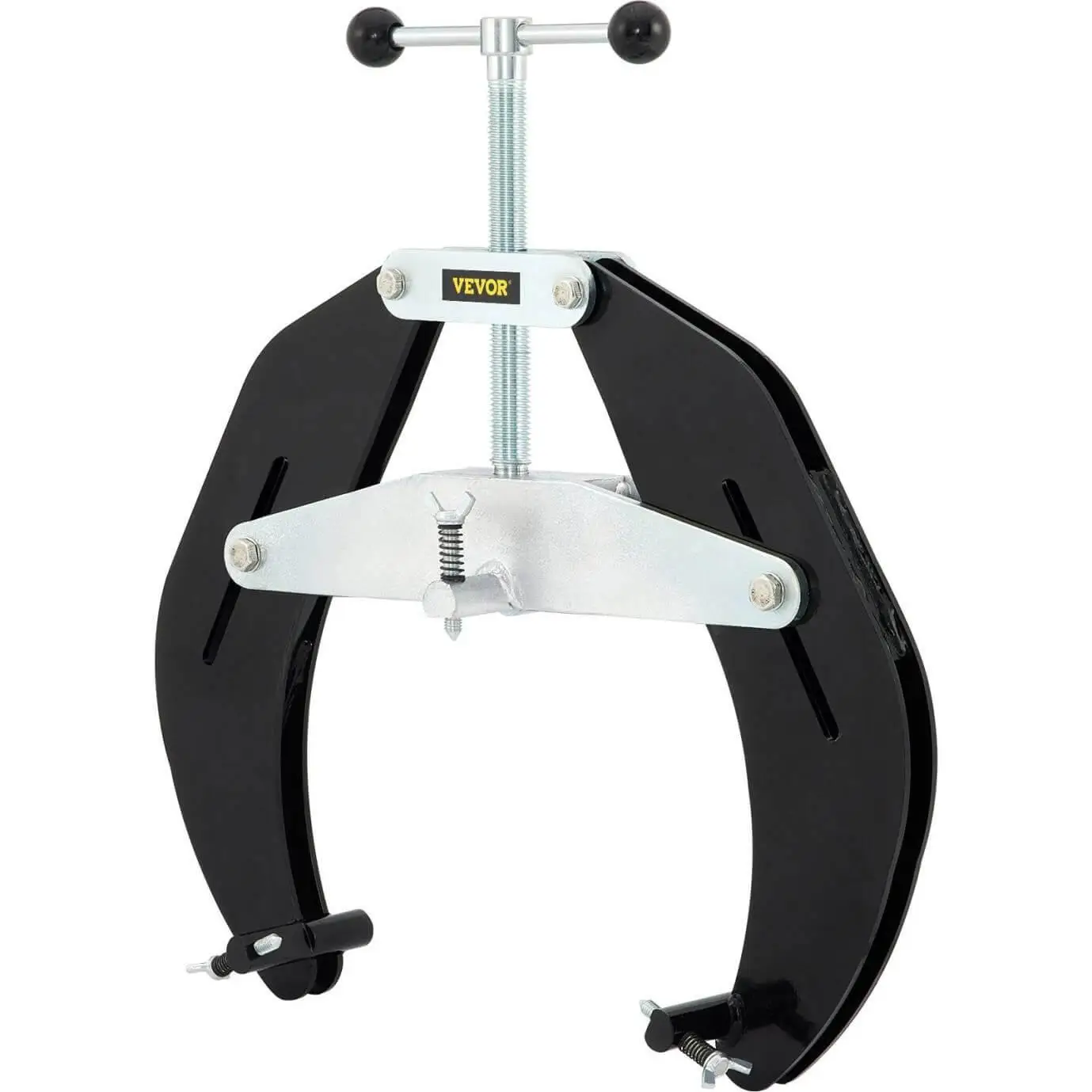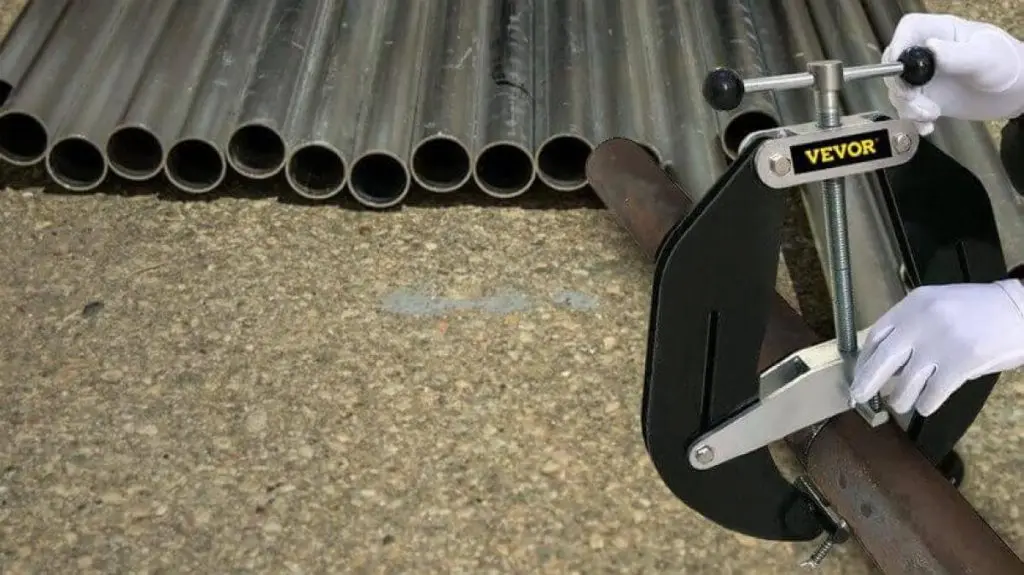A pipe clamp is a kind of clamp that is used to secure pipes in place. It typically consists of a clamp body, which is a band that surrounds the pipe, and a tightening mechanism like a screw or bolt, that is used to apply pressure to the band and secure the pipe in place. Pipe clamps are used in a wide range of applications, including plumbing, HVAC, and industrial piping systems, to prevent pipes from vibrating, moving, or leaking. They are generally made from durable materials such as steel or stainless steel, and can be adjusted to fit a range of pipe sizes.
Pipe clamps allow for precise, secure connections of pipes and other round objects, making them a crucial component in any number of projects. With so many choices, it can be challenging to know which pipe clamps are the best for your specific needs. That’s why we’ve done the research for you and handpicked the top five pipe clamps to review.
List of Top 05 Pipe Clamps of 2023
The following is our list of the top pipe clamps that have been carefully selected for your convenience:
1. VEVOR Pipe Clamp
The VEVOR Pipe Clamp is an excellent tool for both professional and DIY applications. Its high-strength steel construction and unique threaded screw design provide superior alignment capabilities and quick action functionality. Its lightweight and easy to maneuver design allows for use in tight spaces and around the edges of objects with ease. The adjustable range of 5 to 12 inches offers flexibility in size adjustments to meet the needs of any project.

Features
• High-Strength Carbon Steel Construction
• Threaded Screw Design
• Rubber & Foam Padding
• Rustproof
• Versatile Pipefitter Clamp
Pros
• Lightweight and Compact
• Portable Handle
• Easy Adjustment
2. Bessey BPC-H34 H Style Pipe Clamp
The Bessey BPC-H34 H Style Pipe Clamp is an excellent option for metal bar projects, due to its large feet that offer enhanced stability compared to other pipe clamps. It is designed to work with any length of 3/4 inch black pipe and its “H” shape foot assembly provides dual-axis stability. Additionally, it features an extra-high base, offering superior clearance from the work surface. This clamp is resistant to corrosion, easy to adjust with its clutch disc design, and is highly rated by international reviewers for its durability and cost-effectiveness.
Features
• Resistant To Corrosion
• Clutch Disc Design
• Zinc Plated Clutch
Pros
• Cast Jaw
• Extra-High Base
3. IRWIN 224134 QUICK-GRIP Pipe Clamp
The IRWIN 224134 QUICK-GRIP Pipe Clamp is an ideal choice for efficient adjustments, thanks to its one-handed trigger release design. Its wide throat depth allows for use in tight spaces and its swivel jaws provide a secure grip on pipes of up to two inches in diameter.
Features
• Innovative Clutch System
• Ergonomic Handle
• Large Feet
Pros
• Durable & Lightweight Material
• Easy Storage
4. Yaetek Wood Gluing Pipe Clamp
The Yaetek Wood Gluing Pipe Clamp is an ideal choice for woodworking projects, thanks to its robust and durable construction. It features adjustable pressure screws for precise tension and a quick-release mechanism for ease of use. Additionally, it is equipped with soft rubber pads that provide protection against scratches and other damages to the wood, making it an excellent option for woodworking.
Features
• Cast Iron Construction
• 4-Piece Set
• Quick-Release Plate Clutches
Pros
• Perfect for Woodworking
• User-Friendly
• Easy to use
5. Yost YPC-Y12 Pipe Clamp
The Yost Tools YPC-Y12 Pipe Clamp is an ideal choice for delicate projects, owing to its low-profile design. It is constructed with sturdy and high-quality steel, and it features an adjustable pressure screw for precision adjustments. Additionally, it has a specialized non-slip grip that helps to ensure a secure hold on the workpiece.
Features
• Sturdy Steel Construction
• Vise Style T- Bar Tensioning Handle
Pros
• Reliable in Strength
• Holds More Pressure
Different Types of Pipe Clamps
Some widespread pipe clamps include:
C-Clamps
These clamps are used to clamp pipes to walls or other surfaces. They consist of a U-shaped bracket and a bolt that tightens the bracket around the pipe.
Saddle Clamps
These clamps are used to join two pipes together at a 90-degree angle. They have a saddle-shaped bracket that fits around both pipes, and a bolt that tightens the bracket to secure the pipes in place.
Pipe Clips
These clamps are used to hold pipes in place without the need for drilling or welding. They consist of a clip that attaches to the pipe and a bracket that attaches to the wall or other surface.
Spring Clamps
These clamps are used to hold pipes in place without the need for drilling or welding. They consist of a spring-loaded clip that attaches to the pipe and a bracket that attaches to the wall or other surface.
Hinged Clamps
These clamps are used to hold pipes in place without the need for drilling or welding. They consist of a hinged clip that attaches to the pipe and a bracket that attaches to the wall or other surface.
Pipe Strap
These clamps are used to hold pipes in place without the need for drilling or welding. They consist of a strap that attaches to the pipe and a bracket that attaches to the wall or other surface.
Flange Clamps
These clamps are used to secure pipes to flanges or other pipe fittings. They consist of a bracket that attaches to the pipe, and a bolt that tightens the bracket to the flange or fitting.
Pipe Support Clamps
These clamps are used to support pipes and prevent them from moving or vibrating. They consist of a bracket that attaches to the pipe, and a bolt that tightens the bracket to the wall or other surface.

What Should You Look for When Buying a Pipe Clamp
When purchasing a pipe clamp, it is crucial to carefully evaluate several key factors to ensure that the clamp you select is appropriate for your specific needs and requirements.
Type of project
Consider the type of project you will be working on and the type of clamp that will best suit your needs.
Adjustability and ease of use
Adjustability and ease of use are also crucial factors to consider. Look for clamps with adjustable pressure screws, quick-release mechanisms, or other features that make it easy to adjust the clamp to the appropriate tension. This will allow you to work more efficiently and with greater precision.
Material and construction
Look for clamps made of high-quality steel or other durable materials, and with a sturdy design that can withstand heavy use. This will ensure that the clamp will last longer and can handle even the toughest projects.
Size
It is essential to ensure that the clamp is the right size to fit your pipe, as this will prevent any damage or leakage.
Protection
protection is a key factor to consider, consider the clamps that have non-slip grips or rubber pads to prevent scratches and damage to the workpiece. This will help to ensure that your workpiece is
Is Pipe Clamp Worth It?
When it comes to purchasing a pipe clamp, it is vital to consider the specific needs and requirements of your project. Pipe clamps are a versatile and useful tool that can provide a secure and stable grip on pipes or other round objects, allowing for greater precision and control when working on a variety of tasks, particularly in woodworking, metalworking, and other tasks that require clamping a pipe in place. They are also useful when working on delicate projects.
Furthermore, pipe clamps are typically made of high-quality steel or other durable materials, ensuring longevity and the ability to handle heavy use. Additionally, many pipe clamps feature adjustable pressure screws and quick-release mechanisms, making them easy to use and adjust to the appropriate tension. Consequently, if your project requires clamping pipes or other round objects, a pipe clamp is definitely worth the investment.

FAQ’s about Clamp Pipe Fitting
1. How do I install a pipe clamp?
The installation process for a pipe clamp will vary depending on the type of clamp being used. C-clamps, saddle clamps, and flange clamps typically require drilling or welding to secure them in place. Pipe clips, spring clamps, hinged clamps, and pipe straps can be installed without drilling or welding.
2. How do I remove a pipe clamp?
Removing a pipe clamp will depend on the type of clamp being used. C-clamps, saddle clamps, and flange clamps typically require the use of a wrench or other tool to loosen the bolts and remove the clamp. Pipe clips, spring clamps, hinged clamps, and pipe straps can be removed by releasing the tension on the clamp and carefully removing it from the pipe.
3. How do I maintain and care for my pipe clamps?
Proper maintenance and care of pipe clamps is essential to ensure they continue to function properly. Regularly inspecting the clamps for signs of wear or damage, tightening any loose bolts, and keeping the clamps clean are all important steps in maintaining them.





